Developmental Courses
Introduction
Cambridge Development courses for preschool children ages 1 to 5 is based on current research on how infants and toddlers learn and develop in the key domains: social–emotional, language, cognitive, and perceptual and motor development. Our framework presents principles and strategies for supporting early learning to support children’s learning from birth to age five though we only accept children from the age of one.
Our curriculum framework accurately reflects current research, theory, and widely accepted practices in the preschool field. The framework is intended to be consistent with a broad range of curricula or specific curricular approaches. A fundamental consideration in our planning of the early education curriculum is being responsive to the competencies, experiences, interests, and needs each child brings to the preschool classroom. We therefore seek to make our curriculum one that is responsive to each individual child. Exploration and inquiry are important for brain development because as the child engages with the environment they perceive their new world through a variety of sensory exposure. This sensory input stimulates the cerebral cortex, the brain area responsible for learning, reasoning, memory, thinking, language, emotion, intelligence, problem solving and many others.
To further enhance this “learning” process, specially designed tasks further bring about learning opportunities that enhance the quality of the learning experience, thereby deepening and broadening understanding. In the past 20 years, research has uncovered a vast amount of information about how children learn and how best to facilitate it. Research has shown that infants are ready to learn from birth; they are able to absorb information from the sights, sounds, and scents around them, to store it, to sort it, and to use it. This information helps infants understand the world and the people around them.
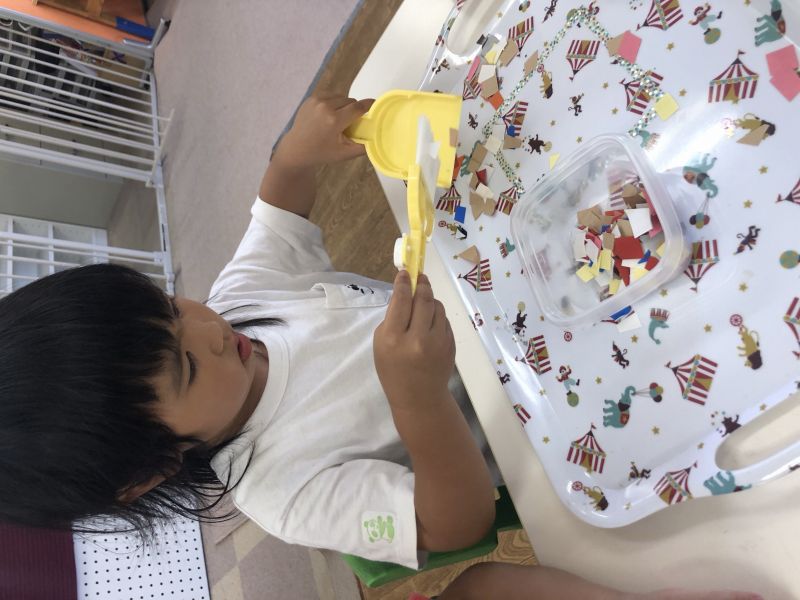
Rapid Brain Development
Because everything is new to infants and toddlers, and their brains are developing rapidly, infancy is a unique period of life that calls for unique responses from adults. The ways infants and toddlers think, feel, and function differ somewhat from the ways children in the developmental periods of elementary, middle childhood, and adolescence think, feel, and function. Synapse formation in different developmental areas peaks at different times from birth to age three. More generally, the ages of 0 to 5 years see rapid development as the brain makes connections faster than at any other time in their lives. This vast neural network of connections provides much of what children will continue with for the rest of their lives. At birth, the average baby's brain is about a quarter of the size of the average adult brain. Incredibly, it doubles in size in the first year and keeps growing to about 80% of adult size by age 3 and 90% – nearly full grown – by age 5. As an example of this period of rapid development, it is easy for children to learn an additional language but even from the age of 6 years old the process becomes much more difficult.
Cognitive Development
The term cognitive development refers to the process of change in intellectual or mental capabilities such as thinking, reasoning, and understanding. The cognitive tasks we want the children to undergo are those that require mental processing to acquire and organise new information. Some of these tasks involve classification and sorting, pattern recognition, cause and effect, shapes and spatial relationships, and attention and memory. All these types of tasks promote inquiry by noticing and storing information and then using that new information in some way. For example, children can learn pattern recognition by looking at shapes in a series to determine what comes next based on the qualities the shapes possess. They need to ascertain those qualities, hold those in mind, then reason what comes next.
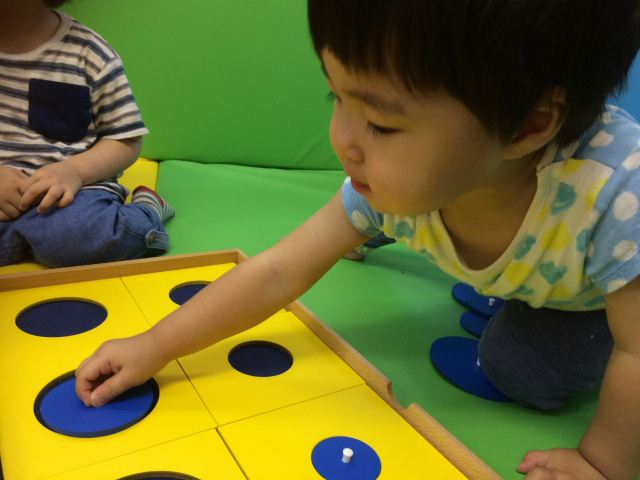
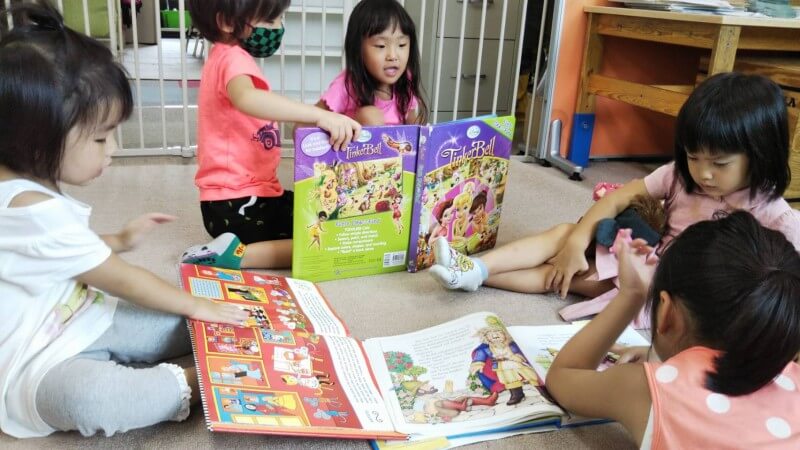
Language Development
Language development is the process through which children acquire the ability to process speech and communicate. It naturally occurs through ongoing interactions with adults. Babies have an inborn capacity to learn language that emerges by experiencing language input from adults. Experiences with language allow infants and toddlers to acquire mastery of sounds, grammar, and rules that guide communication and to share meaning with others. By intentionally including language in responsive interactions with children, and by planning experiences that actively engage children in communication, we can enrich the complex and amazing process of language development. Children will have varied opportunities to become familiar with language through books, songs, rhymes, games, and tasks; these allow the child to interact and respond to stories and images and provide opportunity for language acquisition. They further develop competence in verbal communication by responding to questions as well as describing things and events. Children learn to interact on a social plane through communication as they engage in various tasks and seek explanation and understanding.
Motor and Tactile Development
Motor development refers to changes in a child’s ability to control his body movements, from the infant’s first spontaneous waving and kicking movements to the adaptive control of reaching, locomotion, and complex sport skills. The term motor behaviour describes all movements of the body, including movements of the eyes (as in the gaze) and the infant’s developing control of the head. Gross motor actions include the movement of large limbs or the whole body, such as walking. Fine motor behaviours include the use of fingers to grasp and manipulate objects. Motor behaviours such as touching and grasping are forms of exploratory activity. Children are provided an environment that allows them to move freely and achieve mastery of their bodies through self-initiated movement. They practice emergent skills in coordination, movement, balance, as well as perceptual-motor integration. These include games and puzzles for fine motor skills using fingers and fine control. Walking, rolling, tiptoeing, carrying, catching, and using beams, are all used for gross motor skill development.
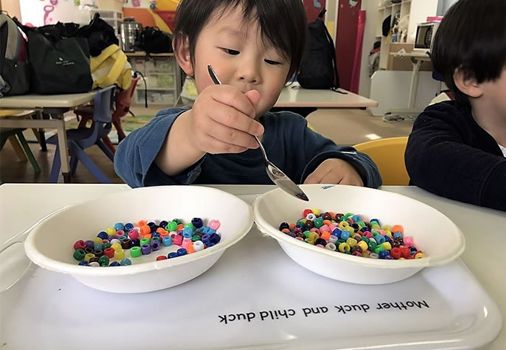

Sensory Perception Development
Perception refers to the process of taking in, organizing, and interpreting sensory information. Perception is multimodal, with multiple sensory inputs contributing to motor responses. When an infant turns her head in response to the visual and auditory cues of the sight of a face and the sound of a voice, she exhibits this type of perception. The senses provide overlapping information which drives perceptual development. In the case of perceptual and motor behaviour, it can be observed that perception, motor behaviour, and cognition occur in the context of culture, emotion, social relationships, and experience, which in turn influence physical and mental health as well as overall brain functioning. This suggests that perception and motor action are interrelated rather than autonomous processes and may be best viewed as different components of an action system.
When providing sensory materials, we focus on ways to support children’s processing of sensory information. For example, the sense of smell using various spices may promote responses that we can classify as good or uncomfortable. This processing enables the child to make distinctions and further refine the sensory experience. Water and sand can both be poured and scooped but their feel in the hands is very different. The use of a variety of props helps classify and distinguish and refine the sensory input we experience.
Social Emotional Development
Infants experience, express, and perceive emotions before they fully understand them. In learning to recognize, label, manage, and communicate their emotions and to perceive and attempt to understand the emotions of others, children build skills that connect them with family, peers, teachers, and the community. These growing capacities help young children to become competent in negotiating increasingly complex social interactions, to participate effectively in relationships and group activities, and to reap the benefits of social support, which is critical to healthy human development and functioning.
Young children who exhibit healthy social, emotional, and behavioural adjustment are more likely to have good academic performance in elementary school. This recent research strengthens the view that early childhood programs support later positive learning outcomes in all domains by focusing on the promotion of healthy social–emotional development. In light of current research, social–emotional experience needs to be at the centre of children’s curriculum planning. It is important for children to acquire both emotional skills and social skills during early year’s education. Emotional development includes self-awareness and understanding others and the world around them. This creates an important sense of belonging and identity. Insights from the family, combined with the teacher’s observations of the child, help the teacher understand the uniqueness of each child and find ways to be responsive to each child’s preferences, abilities, temperament, interests, and needs. The teacher’s responsiveness strengthens the developing relationship with the child and establishes a secure base for the child’s exploration and learning. Children will have varied opportunities to engage with teaching staff who are attentive and responsive to them and help facilitate social competence and their ability to learn through interaction with others. They will have opportunities to develop skills and competences and positive attitudes towards learning such as persistence, engagement, curiosity and mastery. They will also have varied opportunities for entering into social groups, develop friendships, learn to help others, as well as to regulate their own behaviour, feelings, and emotions.

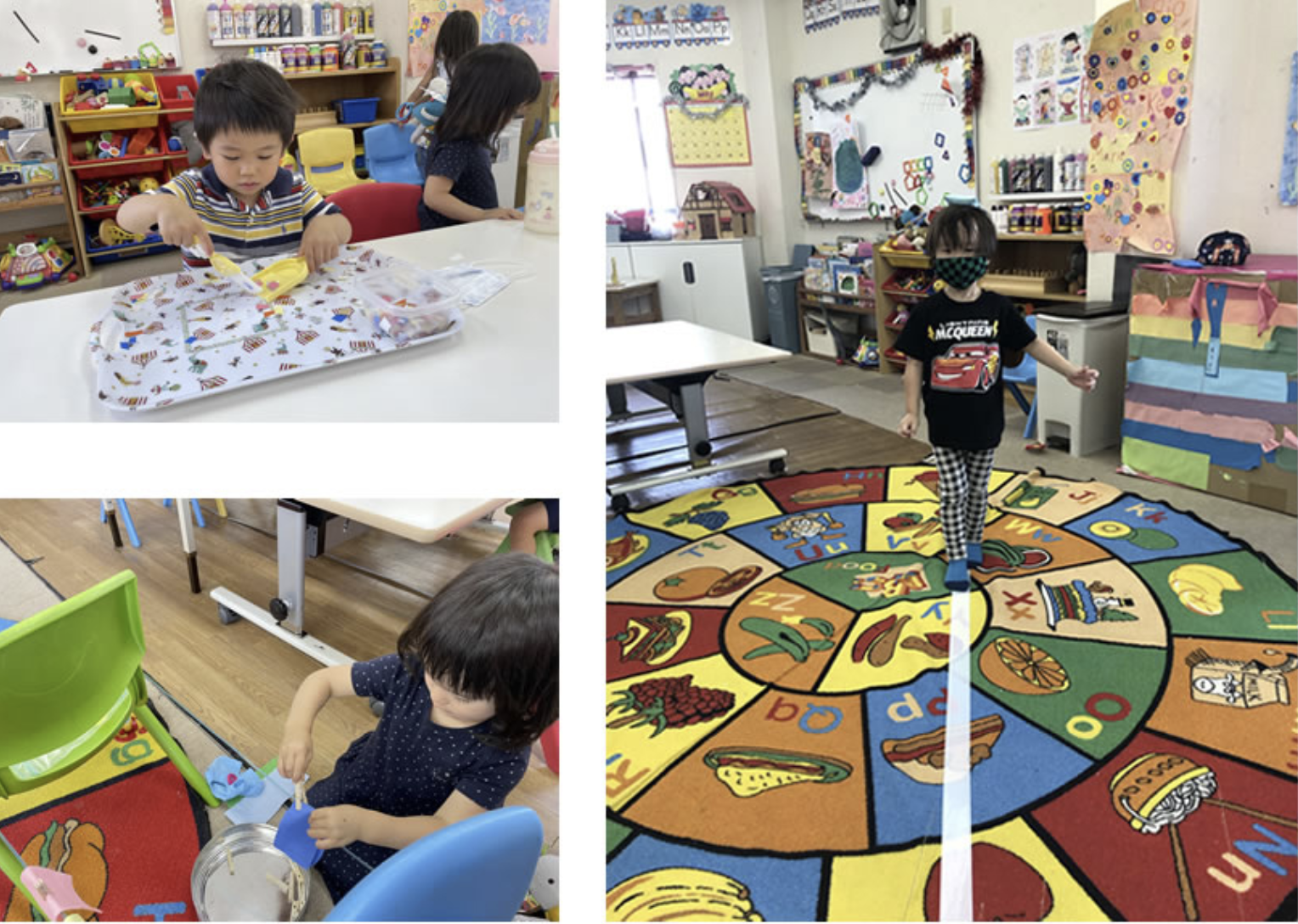
Responsiveness to children’s self-initiated exploration fosters learning
Research shows that responsive care and nurturance not only promotes the development of emotional security in children, but learning and development in general. For example, when compared with young infants who receive non-responsive care, young infants who receive consistent, appropriate, and prompt responses cry less often when they are older.
Individualized teaching benefits all children
Each child is unique. Our teachers use their understanding of each child’s blend of temperament, family and cultural experiences, language experiences, personal strengths, interests, abilities, and dispositions to support the child’s learning and development. Through recognizing and adapting to each child’s individual development, teachers are able to offer learning experiences that are responsive, meaningful, and developmentally attuned to each child.
Providing interactions, experiences, and an environment that meet the individual needs of children enriches the experiences of all children in the program. A classroom environment in which all children are supported and feel welcome creates rich learning experiences for everyone.
Developmental Milestones
Based on current research, we have designed a program that helps determine the key developmental milestones that children need to reach their full potential. These developmental milestones are the building blocks you need to get to the next stage and a central purpose of measuring whether these milestones have been met is to prevent, or limit, growth delays with targeted effective interventions. If everything is delayed it becomes more difficult for children to integrate with other children of similar age and perform the tasks that they’re meant to do at that age. For example, children can often suffer with speech delays because of insufficient human interaction with other children and adults when speech first begins to develop. Therefore, check-ups are important to identify the child’s current attainment level and what the necessary steps are to meet the developmental targets. Once children start to engage, if you give them the nourishment they need, they start growing, developing, and they catch up and go back to normal. This is true for all aspects of development milestones, it’s necessary to take steps; to intervene and to fix it problems. The concern is if those interventions are not happening.
Fees and Schedule
Enrollment fee is currently free. The maintenance fee is an annual fee of 11,000 yen which will be paid in two installments (every 6 months). All prices include tax.
One class is 50 minutes long, however, longer classes are also available. Please inquire for more information.
Our school is closed on Sundays. See below for the school’s calendar.
 Take the next step in your child’s education
Take the next step in your child’s education
A school that nurtures inquiry through innovative tasks with a focus on communicating as we learn
We offer a full curriculum of language arts, mathematics, science, perceptual and motor development as well as special developmental courses in both English and Japanese.
Contact Us
Cambridge School
〒154-0015
1-8-8, Sakurashinmachi, Setagaya-ku, Tokyo

Either Japanese or English is acceptable
Weekdays from 8:30 a.m. to 6:30 p.m



